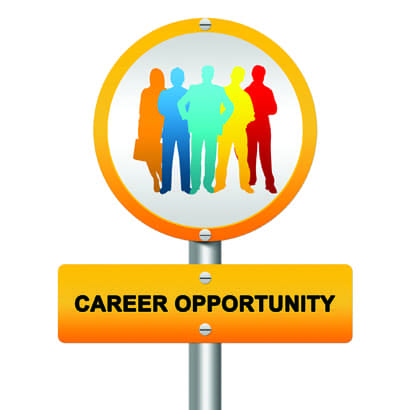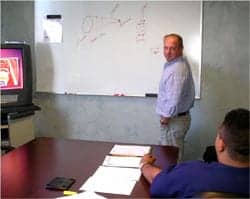Amidst technological advances, changing payor requirements, and healthcare reform, sleep technologists will have to seize new opportunities to thrive. Whether it’s training patients how to use HST or submitting information for preauthorizations, adaptable sleep technologists will pave a new route to success.
By Donna Arand, PhD
Sleep technologists play an essential role in sleep center operation. But this function is changing due to rapid changes in the field. Advances in technology, healthcare reform, changing payor requirements, and new state and federal requirements are impacting sleep centers and sleep technologists. In some parts of the country, such as the Northeast, numerous changes have already occurred. In other areas, changes are coming slowly but surely. To meet these challenges—and opportunities—sleep technologists must adapt.
The impetus for many of the current changes began almost a decade ago with national publicity about the rising cost of healthcare and the threat it poses to the national economy. Examination of the underlying causes by the Office of Inspector General (OIG) identified sleep as an area with a dramatic increase in expenditures. Medicare spending for sleep services had soared 175% rising from $62 million in 2001 to $170 million in 2004 (The OIG 2007 Workplan). This prompted an OIG investigation into sleep medicine amid concerns about the possibility of overutilization, fraud, and abuse. The skyrocketing cost of sleep services also caught the attention of private payors. This helped trigger the current cascade of changes that range from coverage limitations to mandating types of testing and treatment. It’s been an attempt to rein in the spiraling costs for sleep medicine while still providing sleep services and quality care.
Technological Advances Fuel Change
The biggest changes are due to technological advances, including portable sleep testing and auto-titrating positive airway pressure (APAP). These options are now embraced by payors as alternatives to in-lab testing. Although portable sleep testing and APAP have been available for years, they were not widely used due to low or no reimbursement. Recently, however, third-party payors started covering home sleep testing (HST) and an increasing number are denying coverage for in-lab testing (in favor of HST and APAP for uncomplicated obstructive sleep apnea patients). Indeed, the use of portable monitoring is prevalent: A 2012 Board of Registered Polysomnographic Technologists (BRPT) Job Task Analysis survey found about 40% of sleep technologists are now doing portable testing setups at least once per month while 9% indicated that home sleep testing was their primary job.
The widespread use of HST and APAP means the classic roles of night technologist or scorer will be in less demand, while the need for technologists to instruct patients in home monitoring, applying sensors, and troubleshooting remotely will be needed. Additionally, the technologist will need to download and score data on new algorithms and with fewer recorded parameters. This is an opportunity to learn a different skill set that will help the technologist maintain a competitive edge. Additionally, the switch to more HST means more technologists will be needed to work day shifts rather than night shifts.
A Focus on Outcomes
Healthcare’s new focus on outcomes presents another opportunity. To increase PAP compliance, the PAP Nap has been introduced to better acclimate the patient. Use of this new procedure is within the realm of the sleep technologist and is becoming even more important to help increase patient compliance. It’s especially significant because compliance with PAP treatment is a major factor tracked by insurers as a quality measure—with continued coverage for PAP devices dependent on meeting minimum usage requirements. The newer PAP machines have download capabilities that provide objective data indicating hours of actual device usage. The task of downloading, reading, and recording the data also may become the task of a sleep technologist as programs monitor patients’ compliance to meet accreditation and insurance requirements. Other patient outcomes such as morbidity, mortality, and quality of life are also important and relevant to all sleep disorders. Developing programs and methods to monitor these other outcomes will be important for sleep programs and is an appropriate role for sleep technologists.
A Growing Emphasis on Education
Educating patients about sleep and sleep disorders is perhaps the most important new role that is being performed in sleep centers, and it provides another great opportunity. Many sleep disorders are chronic and can impact a person’s life in many ways. Consequently, it’s important to educate patients about good sleep hygiene, their particular sleep disorder, treatment options, treatment effects, and any associated health risks. Teaching patients about sleep and their sleep disorder takes time, but it’s essential to maximize treatment effectiveness and obtain the best patient outcomes. Additionally, the treatment of some sleep maladies, such as insomnia and circadian rhythm disorders, requires the patient to understand basics about the sleep system for effective treatment response (especially long term). Indeed, all patients can benefit from a review of sleep hygiene principles within the context of their own habits to improve quality sleep throughout their lifetime. Treatments such as chronotherapy, light therapy, and sleep restriction require explanation.
Providing patient education should be done by individuals with training as patient educators and who are knowledgeable about the field. This is a role well suited for sleep technologists as they already have a broad understanding of sleep and sleep disorders that they can build on while pursuing opportunities for training in patient education. The BRPT’s Clinical Sleep Educator (CSE) certificate program provides a basic overview and an array of resources for sleep technologists to move into the role of patient educator. The 1-day program provides a certificate, not a credential, and has been met with such enthusiasm that there are now more than 1,000 individuals with the Clinical Sleep Educator certificate. In response to this clear need in a changing field, the BRPT is developing a CSE credential that will be available in the spring of 2014. Offering a credential provides enhanced recognition for this new role and establishes a common skill and knowledge base for sleep educators.
Navigating Payor Requirements
Changing payor requirements also are creating opportunities for sleep technologists. For example, many payors are now requiring that preauthorization be obtained by testing facilities for patients prior to any sleep testing. Requirements and information needed by payors to make coverage determinations vary greatly, and the time and knowledge required to submit the necessary patient medical information for preauthorization requests also varies among payors. Obtaining preauthorizations often requires an understanding of sleep testing, sleep disorders, and sleep history and medical charts to quickly provide accurate information to the payor for case evaluation. In a four- to six- bed center, this can be a full-time job. The level of understanding needed for this task is most efficiently and cost-effectively provided by sleep technologists since they are already familiar with the symptoms of various sleep disorders, have access to information on patients’ sleep history and physical examination results, and are familiar with the sleep CPT and diagnostic codes.
Changes in the Field Create Opportunities
With all of these changes in the sleep field, the role of the sleep technologist is being challenged like never before. Sleep technologists must be prepared for these changes if they want to thrive in their careers. They can do this by staying current on new technologies, such as portable monitoring and APAP, and becoming familiar with new procedures such as the PAP Nap and pediatric protocols. They also should take advantage of numerous professional development opportunities. Attending meetings, courses, and seminars can provide valuable information to increase knowledge and stay current. Obtaining additional credentials—such as the Clinical Sleep Educator credential—will be important to demonstrate competency in new areas and will be valuable assets for future roles in sleep. Pursuing additional education and remaining adaptable to new roles and career paths in sleep will help ensure the technologists’ future success.
Sleep technologists also should be aware that employers will be looking for specialized qualities when evaluating applicants. Since most of the new roles involve greater interaction with patients, people skills and effective communication will weigh heavier than technical competence. The ability to connect with people of all ages and educational backgrounds is critical. In addition, technologists will need to have an in-depth knowledge of a broad range of sleep disorders, comorbidities, variations in sleep across the lifespan, and outcomes monitoring. Those with a college degree, teaching experience, or multiple healthcare credentials are likely to be preferred. Applicants who show a willingness to learn, adapt, and pursue new avenues will claim the advantage.
There will always be a demand for sleep technologists who are experts. Some of the best ways to earn expert status include reading trade magazines and sleep journals as well as volunteering with national and state sleep organizations. Getting involved in national sleep organizations will expose technologists to colleagues from around the country with different skill sets, levels of expertise, practice approaches, and experiences. In addition, involvement with state organizations will keep technologists informed about local licensing issues. Becoming active in sleep organizations will increase an individual’s knowledge about sleep medicine and the larger issues affecting the field. It also will increase their recognition among other professionals. Plus, employers prefer job applicants who are involved in their specialty organizations because it shows commitment and dedication to their profession.
Clearly, there are numerous changes afoot in the field of sleep medicine that are impacting the role of the technologist. These changes are bringing both challenges and new opportunities. By expanding their knowledge and developing new skills consistent with the needs of an evolving field, sleep technologists will be well prepared for their new roles and will enjoy a greater sense of professional accomplishment. SR
Donna Arand, PhD, serves as the BRPT Secretary and is the Clinical Director of the Sleep Disorders Center at Kettering Hospital in Dayton, Ohio. She can be reached at [email protected].







